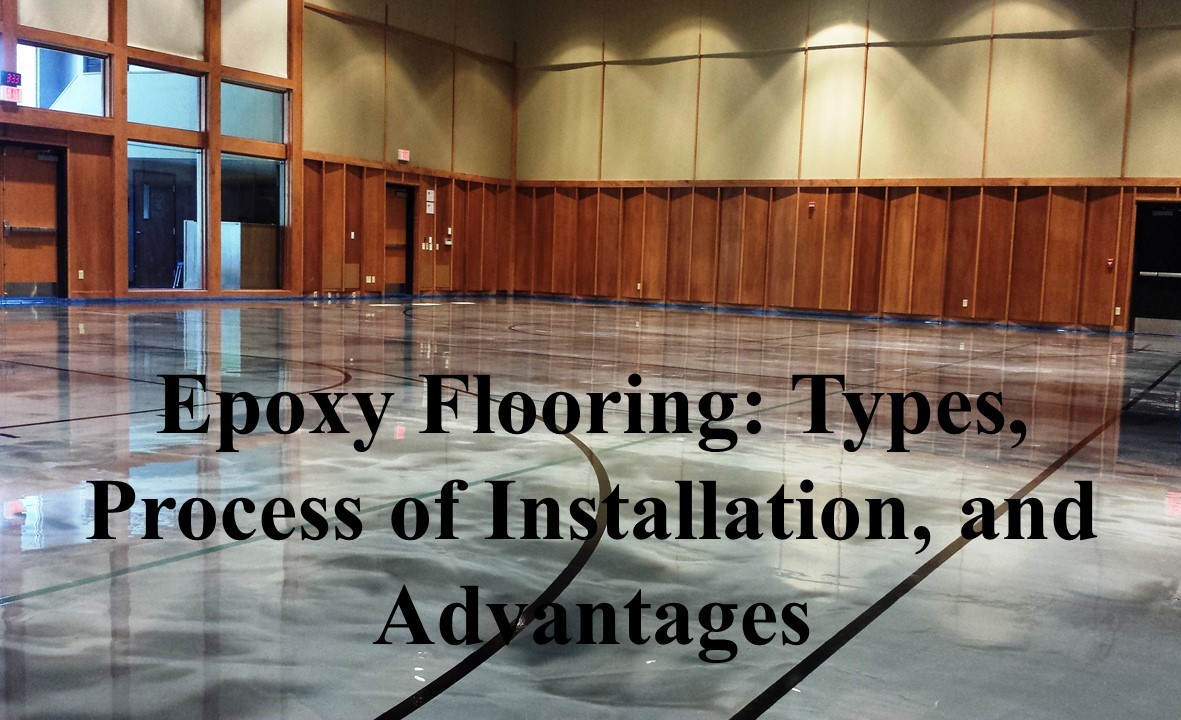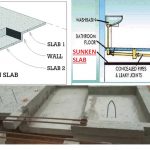Epoxy Flooring: Types, Process of Installation, and Advantages
Epoxy is a paint, plastic, adhesive, or thermoset plastic material made by mixing two or more industrial chemical compounds to provide a high degree of resistance against wear and tear. It provides the most durable and sustainable flooring option.
Epoxy flooring, also known as resinous flooring, has a depth of at least 2 mm; if the depth is less than 2 mm, it is called epoxy coating.
The epoxy coating consists of resins and hardeners. Many additives, such as accelerators, flow control, UV inhibitors, adhesion promoters, etc., are added to create a coating for a wide variety of flooring applications. With these additives, the desired performance characteristics like increased abrasion resistance, rapid curing, higher chemical resistance, etc., can be achieved.
Epoxy coating is typically applied over concrete floors to provide a smooth, durable surface and increase the floor’s load-carrying capacity. Mainly, warehouses, industrial sites, and commercial buildings rely on epoxy floors to maintain clean and safe conditions for workers, equipment, and inventory.
The aesthetics of epoxy flooring can be improved by the addition of different pigments, vinyl flakes, glitter, decorative colored quartz aggregate, etc. Different types of aggregate sand blends (slurry, broadcast, trowel, etc.) are added to epoxy to make it a thicker, more durable, and non-slippery flooring system.
Mechanism of Epoxy Flooring
The most widely used epoxy resins are produced from a reaction between bisphenol-A (BPA) and epichlorohydrin (ECH), which can be obtained in either liquid or solid state. It is necessary to cure the resin with a hardener to convert the epoxy into a strong, infusible, and rigid material.
Epoxy resins can be cured easily at any temperature between 5-150°C. The curing of the resins transforms the epoxy resins into epoxy thermoset polymers, which hold distinct resistance, versatility, durability, and adhesion.
Types of Epoxy Floorings
The different types of epoxy floorings are:
1. Epoxy Mortar Floor
Epoxy mortar floor consists of 100% solid epoxies and quartz sand. It is used for floors that require higher resistance against impact loads and chemicals. It can also be used to repair cracks before applying another type of epoxy floor.
Mechanical spaces, commercial kitchens, warehouses, restaurants, garages, manufacturing plants are some of the places where this kind of epoxy is used for flooring.
2. Self-Leveling Epoxy Floor
A self-leveling epoxy floor is laid over old, new, damaged, or cracked concrete floors to create a durable, smooth, and a leveled texture on the floor’s surface. This type of epoxy increases the aesthetic appearance of the floor.
3. Quartz-Filled Epoxy Floor
The quartz-filled epoxy floor is a combination of stained quartz grains and high-performance epoxy polymer resin. This epoxy floor is employed for decorative spaces that need sanitary and slip-resistant properties.
4. Epoxy Flake Floor
Epoxy flake floors have a vibrant look containing colored flake materials incorporated into epoxy flooring. The flakes also provide the surface with grooves to reduce falls and slips. This type of epoxy is available in a wide variety of colors, styles, sizes, and textures, using which one can enhance the aesthetic appearance of any floor.
Process of Installation of Epoxy Flooring
- The first step in laying the epoxy flooring involves preparing the floor surface.
- The floor surface must be prepared to accept the new coat of epoxy coating on its top.
- Foreign materials such as dust particles are removed from the surface.
- It is then followed by grinding, shot blasting, and scarifying to have a course surface for better bonding with the mother floor.
- Patching and repairing all the major cracks identified on the floor is essential in providing durability to epoxy flooring.
- The surface priming coat is applied to the floor. During priming, it must be made sure that the primer makes its way deep into the floor.
- After applying the primer coat, fill all the visible cracks and holes present on the floor with epoxy.
- Further, the floor must be lightly ground, sanded, and re-layered.
- The sealant is tested using a significant amount of water applied to the floor. If the water is not soaked in, then the floor can be applied with an epoxy coating.
- The epoxy hardener is mixed together with an epoxy resin and applied over the floor surface in multiple layers in the final stage.
- After application, the epoxy floor is cured at the required temperature.
- The curing process is initiated only when the epoxy begins a reaction with another curing agent.
Advantages of Epoxy Floor
Epoxy flooring has many advantages when compared to other traditional flooring options. The advantages are listed below:
- Increases the brightness of interior areas as epoxy creates a shiny high-gloss surface.
- Epoxy provides a durable, hard surface that can withstand heavy and continuous loads.
- It is easy to install and does not require any special tools or equipment.
- Epoxy floors have excellent chemical resistance; they can resist many chemicals, making them ideal for industries and warehouses.
- It protects the existing concrete layer from wear and tear.
- Easy to clean and more durable.
- It increases safety when epoxy contains anti-slip additives.
- It helps in hiding chips and cracks when combined with paints and colors.
- It helps in identifying walkable areas when applied in a different pattern.
- Enhances the aesthetic appearance of the space.
- Little or no maintenance is required.
FAQs
- What are the types of Epoxy Floorings?
The different types of epoxy floorings are:
1. Epoxy mortar floor
2. Self-levelling epoxy floor
3. Quartz-filled epoxy floor
4. Epoxy flake floor
What is epoxy flooring?
Epoxy is a paint, plastic, adhesive, or thermoset plastic material made by mixing two or more industrial chemical compounds to provide a high degree of resistance against wear and tear. It provides the most durable and sustainable flooring option.
What are the uses and applications of epoxy flooring?
Epoxy coating is typically applied over concrete floors to provide a smooth, durable surface and increases the floor’s load-carrying capacity. Mainly, warehouses, industrial sites, and commercial buildings rely on epoxy floors to maintain clean and safe conditions for workers, equipment, and inventory.


















